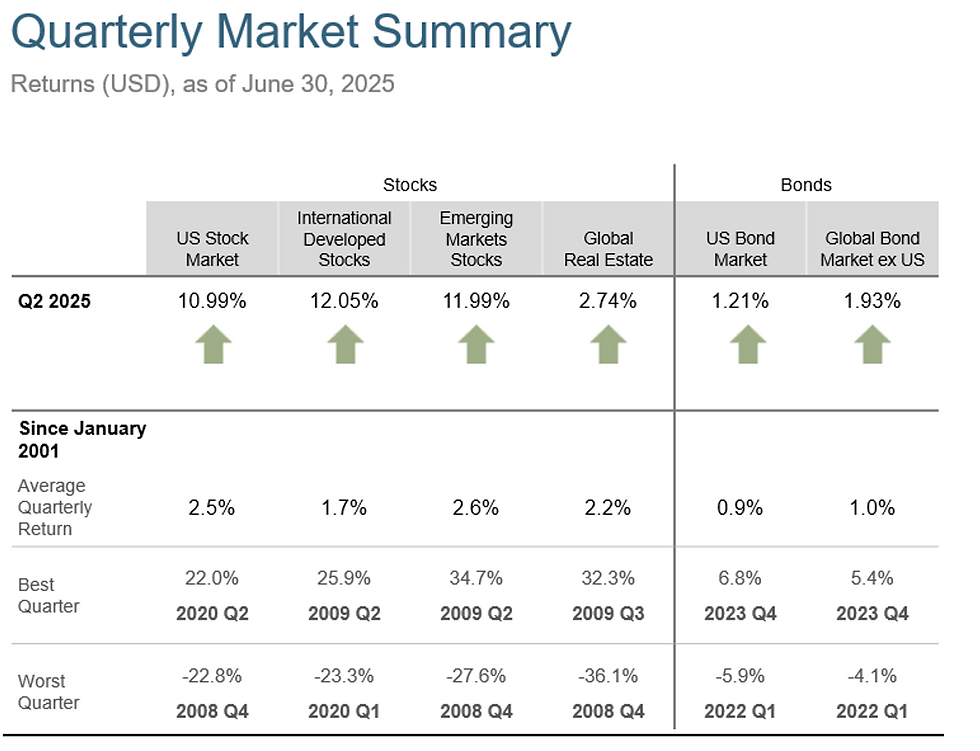Understanding Opportunistic Rebalancing: A Smarter Way to Manage Your Investments
- Tim Sallade

- Apr 18
- 3 min read
When it comes to investing, many people think the secret to success lies in picking the right stocks or finding the next big thing. But one of the most important — and often overlooked — strategies is rebalancing your investment portfolio.
Let’s break that down. And don’t worry, you don’t need to be a financial expert to understand it!
What Is an Investment Portfolio?
An investment portfolio is simply the collection of things you invest in — like stocks, bonds, or mutual funds. Think of it like a garden. Some parts grow faster than others, and to keep everything healthy, you occasionally need to trim or replant. That’s where rebalancing comes in.
Why Rebalance Your Portfolio?
Over time, different parts of your portfolio will grow at different rates. Maybe your stocks shoot up in value, but your bonds stay the same. That changes the balance of your investments.
Let’s say you decided to invest 60% in stocks and 40% in bonds. If your stocks do really well, they might now make up 70% of your portfolio, which means your investments are riskier than you originally planned.
Rebalancing is the process of adjusting your investments back to your original mix — selling a bit of what’s grown too much and buying more of what’s lagged behind.
So What Is Opportunistic Rebalancing?
Traditional rebalancing often happens on a set schedule — like once a year. But opportunistic rebalancing is a more flexible and smarter way to do it.
Instead of rebalancing based on time (e.g., every January), opportunistic rebalancing watches for chances to rebalance when it actually matters — when your investments have drifted too far from your target mix.
Here’s how it works:
Set thresholds, not dates. AT LTWM, we rebalance any asset class in your portfolio that drifts 20% away from its target.
Monitor regularly. We keep an eye on your investments, not to rebalance constantly, but to spot opportunities — like big swings in the market. At LTWM, we monitor portfolios every other week and move to weekly monitoring during high volatility
Act when it makes sense. If stocks have gone way up and are now a much larger portion of your portfolio than you intended, that might be a good time to sell some assets and buy others that are “on sale.”
Why Use Opportunistic Rebalancing?
It’s more responsive. You’re reacting to real changes in your investments, not just a date on the calendar.
It can reduce risk. If you let your portfolio get too out of balance, you might be taking on more risk than you’re comfortable with.
It may improve returns. By selling high and buying low (the basic idea of rebalancing), you might boost your long-term gains.
An Analogy: Grocery Shopping
Imagine you shop for groceries every Sunday. But one week, apples suddenly go on a huge sale on Thursday. Wouldn’t it be smart to stock up then, instead of waiting for Sunday?
That’s opportunistic rebalancing in a nutshell — it’s about making smart decisions based on what’s happening, not just sticking to a rigid schedule.
Rebalancing at LTWM
LTWM’s process for portfolio rebalancing is based on the research of Gobind Daryanani and his white paper, Opportunistic Rebalancing, which provided empirical evidence supporting more frequent monitoring and less frequent rebalancing than applied in practice up to that point. We embrace this research and use a process of monitoring portfolios every week to find the best opportunities for rebalancing back to the model portfolio weights. We use asset class movement bands of 20% and rebalance asset classes when outside of the rebalance band. Using this rebalancing discipline can add 40 to 80 basis points annually, depending on market conditions, a much higher result than quarterly or annual rebalancing.


